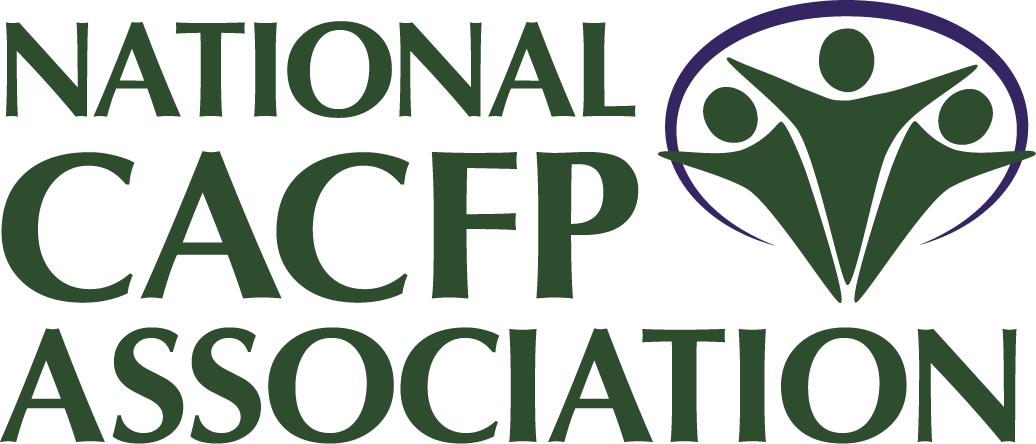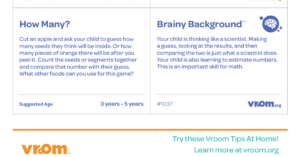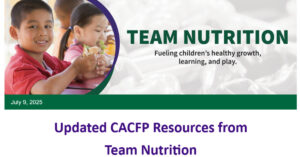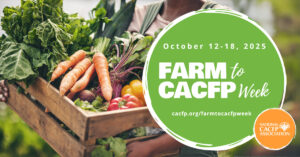Posts Tagged ‘Early Care and Education’
2025-2026 CACFP Reimbursement Rates
The USDA has released the Reimbursement Rates for 2025-2026. Rates are effective from July 1, 2025, through June 30, 2026.
Read MoreCACFP: A Critical Support for Child Care
The CACFP has many benefits – it supports child care providers and ensures that children and adults in care receive nutritious meals. The CACFP is also critical in supporting child care businesses by decreasing costs that can be reallocated towards program improvement, staff wages, or lower tuition rates.
Read MoreRead Aloud Tips for Babies and Toddlers
Research shows that reading aloud with children is the single most important thing you can do to prepare a child for reading and learning. Our partners at Read Aloud 15 Minutes national campaign promotes parents and caregivers reading aloud to their children at least 15 minutes every day starting at birth.
Read MoreFood and Play Brain Builders
We know summer is a busy time for families and caregivers. Good news is that brain building doesn’t require any extra time, money, or stuff. It fits into what you already do. Mealtime is a great time to teach children skills like listening, problem solving, focus, and more! Our partners at Vroom have some great food and play brain builders for you to use.
Read MoreUSDA and HHS Notice: CNPs and Head Start as Federal Public Benefit
USDA and HHS each released a notice stating that many programs under the jurisdiction of both departments are now interpreted as “Federal Public Benefits,” including all CNPs and Head Start. The notices aim to address whether citizenship or qualified immigration status must be verified in order for a child to participate in these federal programs.
Read MoreUpdated CACFP Resources
Team Nutrition updated the following training resources for the Child and Adult Care Food Program (CACFP). These resources provide CACFP operators with strategies to encourage healthy choices and healthy outcomes for their participants.
Read MoreComing Up! Farm to CACFP Events
Farm to CACFP connects providers to local food producers with the objectives of serving locally-grown foods and providing nutrition education. Check out these upcoming events at NCA!
Read MoreReducing Screen Time
Unsurprisingly, people spend hours each day in front of screens, whether on computers, TVs, tablets, gaming systems, or smartphones. While media use can be a valuable source of learning and entertainment, excessive screen time can have negative effects. Our partners at the Institute of Child Nutrition explore the risks of too much screen time, provide recommendations, tips for limiting usage, and sample policy ideas for programs.
Read MoreUSDA Rescinds Guidance on Interpretation of Discrimination Based on Sex
The USDA released a memorandum rescinding 2022 guidance regarding the interpretation of discrimination based on “sex.” The 2022 guidance redefined the definition of “sex” to include gender identity and sexual orientation. Therefore, the rescission of this guidance will revert USDA’s definition back to its previous interpretation and omit mention of gender identity and sexual orientation.
Read MoreNutrition Myths
Our partners at the Dr. Yum Project tackle some of the most common and confusing nutrition myths for you and your family.
Read More









